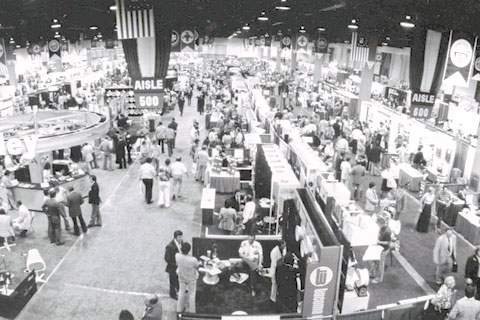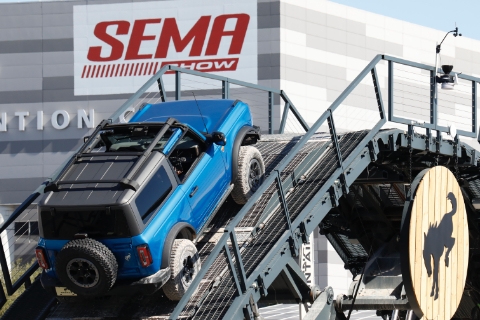SEMA NEWS - December 2009
By Annie Kang
Two Programs Lead to Huge Time Savings for SEMA-Member Companies
 |
|
|
Not only is the Technology Transfer program a time and cost-saving initiative, but it also allows manufacturers to achieve designs that otherwise would be difficult to explore. |
SEMA-hosted OEM Measuring Sessions allow members hands-on access to new vehicles in order to collect surface data, while the Technology Transfer program provides members with computer-aided design (CAD) data provided by participating OEMs.
“In order to gain access to new vehicles prior to these programs, members would either have to go to the dealers, which is inconvenient and dealers don’t always agree to that, or they would have to travel to trade shows, such as the SEMA Show, where it is crowded and there is a lot going on,” said Bill Wolf, SEMA senior director of OEM relations.
SEMA holds about 20 Measuring Sessions a year, and they are available only to SEMA-member manufacturers. Through Measuring Sessions, which are generally held at the OEM’s location, members have the opportunity to communicate directly with the automaker’s engineers.
According to Wolf, Measuring Sessions save members time spent in both effort and extended travel in order to obtain access to the vehicles, as well as providing them with a more controlled environment in which to collect their data.
With the Technology Transfer program, members can request data through the SEMA website. SEMA then electronically delivers the CAD files, which can be processed directly into their machinery and computers.
“Members can build the exact same product as the OEM without even seeing the car,” said Wolf. “That’s the beauty of the program—the first time they see the vehicle is when they go to fit the part.”
The intent of the program, which is open only to SEMA-member manufacturers, is to alleviate the necessity for reverse engineering.
“The Technology Transfer data eases my workload by eliminating most of the need to disassemble a vehicle and measure a part in order to get the basic dimensions needed to initiate a design,” said Aric Pogel, design engineer for Florida-based Steeda Autosports, a Ford-centric manufacturer of performance parts and accessories. “Further into the design, more time is saved by being able to predict interferences in a virtual environment rather than repeated test-fittings followed by design modifications.”
Steeda requests Technology Transfer data about once a month to design products for power upgrades; suspension and handling upgrades; and exterior body modifications, including bumper covers, rocker panels, hoods and trunks.
“For almost everything that we design, we request Technology Transfer data,” said Pogel.
Shane Wagner, engineering manager for Scott Drake Enterprises, a Nevada-based manufacturer of reproduction parts for classic and late-model Mustangs, agreed that the Technology Transfer program cuts a huge amount of time out of the design process.
“The program definitely speeds up the time it takes to produce a part,” said Wagner. “What would take us months now only takes us weeks. It’s night and day.”
Wagner first learned about the program while exhibiting at the 2006 SEMA Show with his prior employer.
 |
|
SEMA holds about 20 Measuring Sessions a year, and they are available only to SEMA-member manufacturers. Through Measuring Sessions, which are generally held at the OEM’s location, members have the opportunity to communicate directly with the automaker’s engineers. |
Wagner estimated that the program has saved the company thousands of dollars due to the reduced need for multiple prototypes and redesigns.
Not only is the Technology Transfer program a time and cost-saving initiative, but it also allows manufacturers to achieve designs that otherwise would be difficult to explore.
“A lot of the complex stuff that we do would be impossible by just measuring the vehicles,” said Wagner.
Member companies that have participated in either Measuring Sessions or the Technology Transfer program qualify to vote for the SEMA Most Accessory-Friendly Vehicles, which are awarded annually.
The first Measuring Session took place in 1997 for the ’98 Dodge Dakota and Durango and ’98 Ford Ranger and F-Series HD. The Technology Transfer program was established in 1999, providing data for the ’00 Ford Focus.
“Both programs came about as an offshoot of members asking for additional information on products,” said Wolf.
The challenge lay in getting the first of one of the major OEMs to participate in the programs. According to Wolf, once Ford signed on, many of the other OEMs soon followed.
“I think the OEMs started to realize how important customization is to a lot of consumers,” said Wolf. “It really behooves the OEMs to share information because it helps sells cars, it protects brand identity by helping aftermarket companies produce quality products, and it makes for a happy customer overall.”








